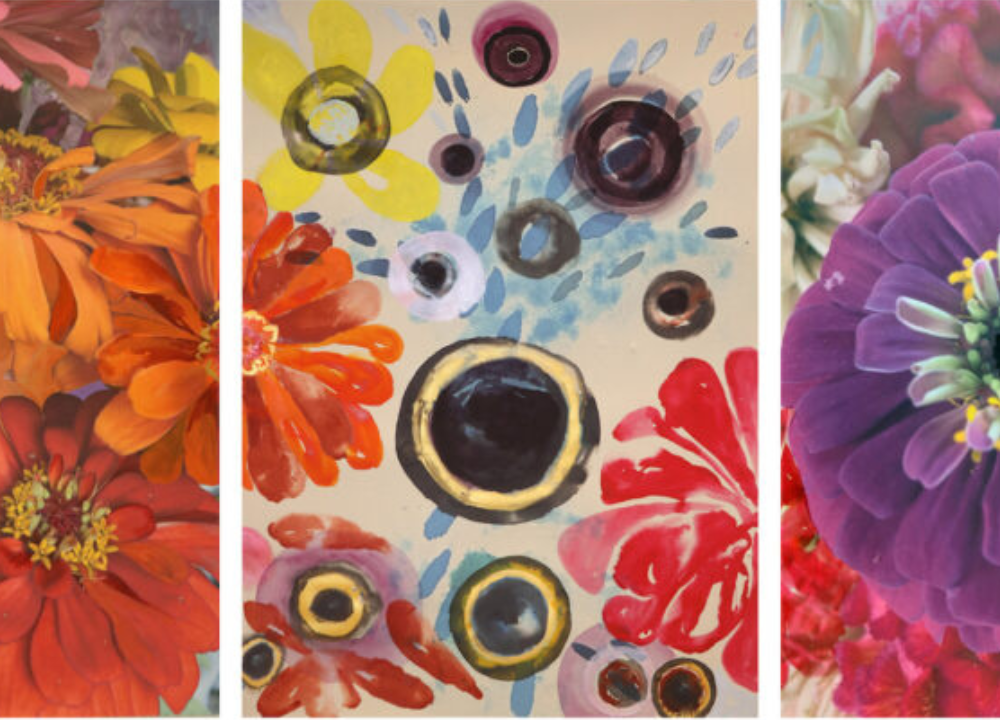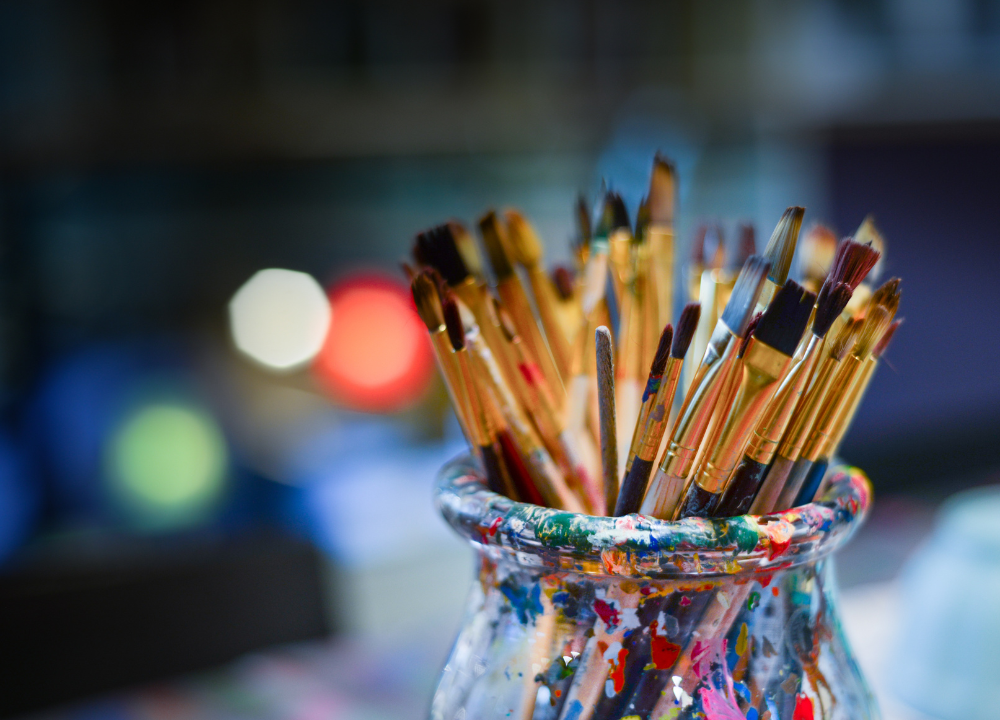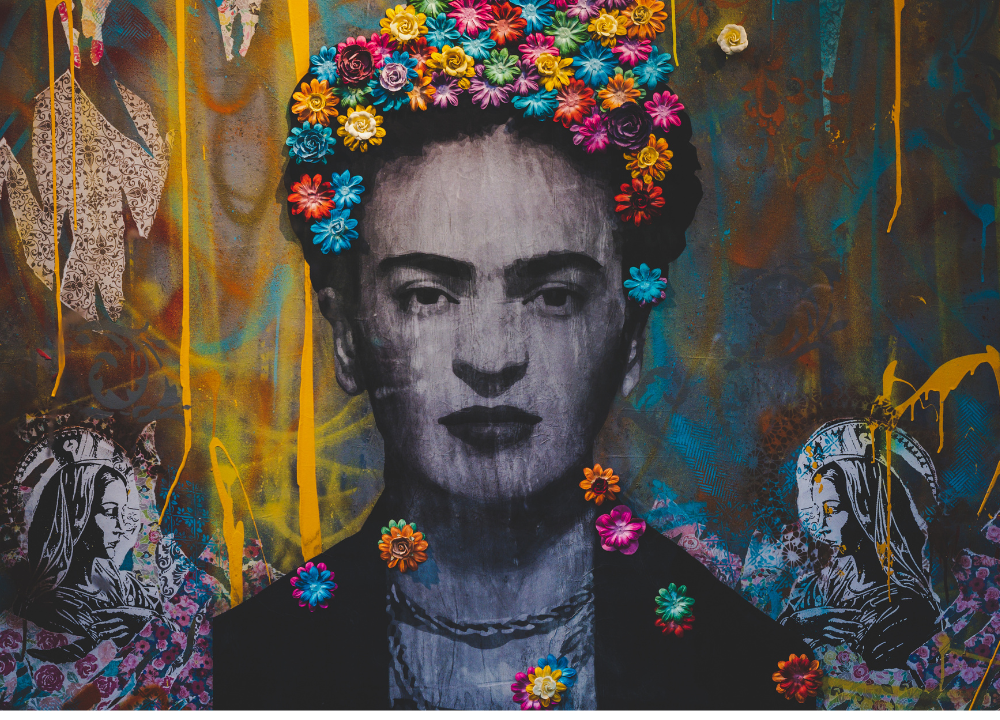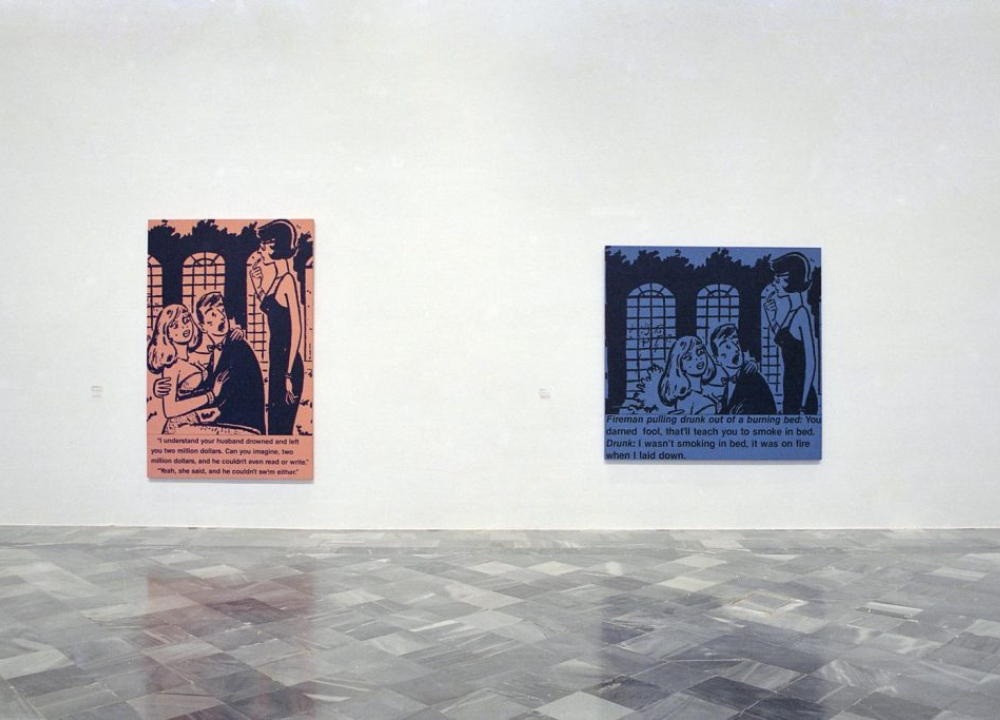Start with quality materials, practice consistently, and seek feedback. Embrace mistakes and explore different styles.
Starting as an artist can be both exciting and challenging. New artists often face numerous questions about techniques, materials, and developing their unique style. Using quality supplies can make a significant difference in your work. Consistent practice is essential to improve your skills and build confidence.
Seeking constructive feedback helps identify areas for growth. Mistakes should be embraced as learning opportunities. Experimenting with various styles and mediums can foster creativity and help discover your artistic voice. Remember, every great artist started as a beginner, and persistence is key to growth in the art world.
Finding Inspiration
Starting as an artist can be both exciting and challenging. One of the biggest hurdles is finding inspiration. Whether you are a painter, sculptor, or digital artist, knowing where to look for ideas can spark your creativity and drive your passion. Below are some practical tips to help you discover and harness inspiration for your artistic journey.
Exploring Different Art Styles
Exploring various art styles can open up a world of possibilities. By studying different techniques and methods, you can find what resonates with you. Here are some ways to explore:
- Visit Art Galleries: Spend time at local galleries to see a variety of styles up close.
- Study Art History: Learn about the evolution of art through the ages. This can give you a deeper understanding of different styles.
- Experiment: Try creating art in different styles. Experimenting with styles can help you find your niche.
To help you keep track, consider creating a table of different art styles you want to explore:
| Style | Characteristics | Examples |
|---|---|---|
| Impressionism | Light and color focus | Claude Monet |
| Abstract | Non-representational | Wassily Kandinsky |
| Realism | Depicts real life | Gustave Courbet |
Exploring different art styles can help you understand what you enjoy and what techniques you want to master.
Utilizing Nature And Everyday Life
Nature and everyday life offer endless inspiration. Observing your surroundings can provide fresh ideas and perspectives. Here are some methods to tap into these sources:
- Take Regular Walks: Spend time in nature to observe colors, shapes, and patterns.
- Photograph Daily Life: Capture moments from your daily routine. These snapshots can be used as references.
- Keep a Sketchbook: Draw quick sketches of what you see around you. A sketchbook is a great way to store ideas.
Consider these specific subjects for inspiration:
- Landscapes
- Flowers and Plants
- Urban Scenes
- People in Daily Activities
By utilizing nature and everyday life, you can find unique and personal inspiration. These sources are always available and can provide a constant flow of new ideas for your artwork.
Basic Art Supplies
Embarking on an artistic journey can be thrilling. For beginning artists, having the right tools is crucial. This guide on 5 Ideas and Tips for Beginning Artists will cover the basic art supplies you need to get started. By focusing on essential drawing tools and selecting the right paper and canvas, you can set a solid foundation for your creative endeavors.
Essential Drawing Tools
Having the right drawing tools is key for any beginner. Here are some essentials to consider:
- Pencils: Start with a set of graphite pencils ranging from 2H to 6B. This variety allows for different shades and depths.
- Erasers: Use a kneaded eraser for lightening areas and a white plastic eraser for clean, sharp corrections.
- Pencil Sharpener: A good sharpener ensures your pencils are always ready for detail work.
- Ruler: For drawing straight lines and measuring proportions.
- Blending Stumps: These help in blending pencil strokes to create smooth gradients.
Here’s a quick overview of essential drawing tools and their uses:
| Tool | Use |
|---|---|
| Pencils | Creating different shades and depths |
| Erasers | Correcting and lightening areas |
| Pencil Sharpener | Maintaining pencil points |
| Ruler | Drawing straight lines |
| Blending Stumps | Smoothing out pencil strokes |
Selecting The Right Paper And Canvas
Choosing the right paper and canvas can impact your artwork significantly. Here are some tips:
- Sketchbooks: For practicing and experimenting. Look for ones with smooth or slightly textured paper.
- Drawing Paper: Heavier and more textured than sketchbook paper. Ideal for final pieces.
- Watercolor Paper: Necessary if you plan to use watercolors. It absorbs water without warping.
- Canvas: Best for acrylics and oils. Comes in pre-stretched or canvas boards.
Here’s a comparison of different papers and their uses:
| Type | Use |
|---|---|
| Sketchbooks | Practice and experimentation |
| Drawing Paper | Final pieces with pencils and inks |
| Watercolor Paper | Watercolor paintings |
| Canvas | Acrylic and oil paintings |
Remember, the right paper or canvas can enhance your work. Experiment with different types to find what suits your style best.

Learning Fundamental Techniques
Starting your journey as an artist can be exciting and overwhelming. Learning fundamental techniques is crucial for developing your skills. These techniques form the foundation upon which you can build your unique style. This section will delve into two essential techniques: understanding light and shadow, and mastering perspective.
Understanding Light And Shadow
Understanding light and shadow is essential for creating realistic art. Light and shadow give your drawings depth and dimension. Here are a few key points to keep in mind:
- Light Source: Identify where the light is coming from. The direction of the light affects where shadows fall.
- Highlights: These are the brightest spots on your subject where the light hits directly.
- Midtones: These areas are partially lit, showing the true color of the subject.
- Shadows: The darkest parts, where light is blocked.
Experiment with different light sources. Use a lamp to practice how light and shadow interact with various objects. Draw the same object with different lighting to see how it changes.
Here is a simple table to understand the terms:
| Term | Description |
|---|---|
| Light Source | Origin of light affecting the subject |
| Highlights | Brightest spots on the subject |
| Midtones | Partially lit areas showing true color |
| Shadows | Darkest parts where light is blocked |
Mastering Perspective
Perspective helps create the illusion of depth on a flat surface. Understanding perspective is vital for giving your drawings a 3D effect. Here are some basic concepts:
- Horizon Line: This is the eye level of the viewer. Objects above the line appear higher, and below it, they appear lower.
- Vanishing Point: The point where parallel lines appear to meet in the distance.
- One-Point Perspective: Uses a single vanishing point. Think of a straight road disappearing into the distance.
- Two-Point Perspective: Uses two vanishing points. Commonly used for drawing buildings and interiors.
Practice drawing simple shapes like cubes and cylinders in different perspectives. Use grids to help guide your lines. As you get comfortable, move on to more complex structures.
Here is a quick reference table:
| Term | Description |
|---|---|
| Horizon Line | The eye level of the viewer |
| Vanishing Point | Point where parallel lines meet |
| One-Point Perspective | Single vanishing point, simple depth |
| Two-Point Perspective | Two vanishing points, complex depth |
Master these fundamental techniques to improve your art. Practice regularly and observe the world around you.
Seeking Constructive Criticism
Embarking on an artistic journey can be both exciting and daunting. As a beginner, seeking constructive criticism is crucial for growth and improvement. Constructive feedback helps you identify areas for improvement and encourages you to refine your skills. Let’s dive into two vital ways to receive valuable feedback: joining art communities and receiving feedback from mentors.
Joining Art Communities
Joining art communities is an excellent way for beginning artists to seek constructive criticism. These communities provide a supportive environment where artists can share their work and receive feedback. Here are some benefits of joining art communities:
- Exposure to Different Styles: You’ll see various art styles and techniques, which can inspire you and broaden your artistic perspective.
- Constructive Feedback: Fellow artists can offer advice and tips to help you improve your work.
- Networking Opportunities: Building connections with other artists can lead to collaborations and professional opportunities.
Consider these popular platforms to join art communities:
| Platform | Description |
|---|---|
| DeviantArt | An online community showcasing various art forms and styles. |
| ArtStation | A platform for artists to showcase their portfolios and connect with industry professionals. |
| Subreddits like r/ArtCrit and r/LearnArt offer spaces for feedback and learning. |
Receiving Feedback From Mentors
Mentors play a crucial role in an artist’s development. They provide personalized advice and guidance based on their experience. Here are some tips for receiving feedback from mentors:
- Choose the Right Mentor: Look for someone whose work you admire and who has experience in your desired art style.
- Be Open to Criticism: Accept feedback gracefully and view it as a learning opportunity.
- Ask Specific Questions: When seeking feedback, ask about particular aspects of your work, such as composition or color use.
Here are some ways to find mentors:
- Art Classes and Workshops: Enroll in classes where instructors can provide one-on-one feedback.
- Online Courses: Platforms like Skillshare and Udemy offer courses with mentorship components.
- Networking Events: Attend art fairs, exhibitions, and networking events to meet potential mentors.
Establishing a relationship with a mentor can accelerate your growth as an artist. Their insights and advice can help you navigate the complexities of the art world and refine your skills.
Setting Realistic Goals
Beginning a journey as an artist can be both exciting and challenging. One of the most crucial aspects of this journey is setting realistic goals. This helps maintain motivation and ensures steady progress. In this post, we will explore five ideas and tips for beginners, with a focus on setting realistic goals.
Balancing Practice And Patience
Creating art requires a balance of practice and patience. It’s important to practice regularly to improve skills. Yet, patience is vital as progress often takes time. To achieve this balance, consider the following tips:
- Daily Practice: Dedicate at least 30 minutes each day to practice. Consistency is key.
- Short Breaks: Take short breaks during long practice sessions to avoid burnout.
- Goal Setting: Set small, manageable goals. This can include completing a sketch or mastering a technique.
- Positive Mindset: Stay positive and patient. Remember that improvement takes time.
Below is a simple table to help you balance your practice and patience:
| Activity | Time | Frequency |
|---|---|---|
| Sketching | 30 minutes | Daily |
| Learning New Techniques | 1 hour | Weekly |
| Reviewing Progress | 15 minutes | Weekly |
Measuring Progress
Measuring progress is crucial for staying motivated. It helps identify areas of improvement and celebrate achievements. Here are some effective ways to measure your progress:
- Keep a Journal: Document your daily practice. Note down what you learned and areas for improvement.
- Take Photos: Photograph your artwork regularly. Compare photos to see your growth over time.
- Set Milestones: Create milestones for your goals. Celebrate when you achieve them.
- Seek Feedback: Ask for feedback from fellow artists or mentors. Constructive criticism helps improve skills.
- Self-Evaluation: Regularly evaluate your work. Identify what you did well and what needs more practice.
Below is a simple table to help you track your progress:
| Week | Goal | Achievement |
|---|---|---|
| 1 | Complete 5 sketches | Completed 4 sketches |
| 2 | Learn shading techniques | Mastered basic shading |
| 3 | Draw a portrait | Completed a basic portrait |
Exploring Different Mediums
Starting your journey as an artist can be both exciting and challenging. One of the best ways to develop your skills and find your unique style is by exploring different mediums. Experimenting with various materials allows you to discover what you enjoy most and what suits your artistic vision.
Experimenting With Watercolors
Watercolors are a fantastic medium for beginners. They are easy to use and require minimal supplies. Watercolors can create beautiful, transparent layers that bring your artwork to life. Here are some tips to get you started:
- Invest in quality watercolor paints: Higher quality paints have better pigmentation and blend well.
- Use watercolor paper: Regular paper can warp and tear. Watercolor paper is thicker and can handle water well.
- Start with simple washes: Practice making even, gradient washes. This helps you control the amount of water and paint on your brush.
- Experiment with different techniques: Try wet-on-wet, wet-on-dry, and dry brush techniques to see the different effects you can achieve.
Here’s a simple table to help you understand the different watercolor techniques:
| Technique | Description |
|---|---|
| Wet-on-Wet | Applying wet paint onto a wet surface |
| Wet-on-Dry | Applying wet paint onto a dry surface |
| Dry Brush | Using a dry brush with minimal water |
Don’t be afraid to make mistakes. Each mistake is a learning opportunity. The more you practice, the more comfortable you will become with watercolors.
Venturing Into Sculpture
Sculpture is a three-dimensional art form that can be incredibly rewarding. It involves shaping materials like clay, wood, metal, or stone. Starting with clay is a good choice for beginners. Here are some tips to help you get started:
- Choose the right type of clay: Air-dry clay is easy to use and doesn’t require a kiln. Polymer clay is another good option as it can be baked in a home oven.
- Gather essential tools: Basic tools include a rolling pin, sculpting tools, and a wire cutter. These will help you shape and detail your sculpture.
- Start with simple projects: Create small, simple shapes like bowls, animals, or abstract forms. This helps you get a feel for the medium.
- Learn basic techniques: Practice techniques like coiling, pinching, and slab building to create different forms.
Here’s a quick reference for different clay types:
| Clay Type | Characteristics |
|---|---|
| Air-Dry Clay | Dries at room temperature, easy to use |
| Polymer Clay | Bakes in home oven, versatile |
| Stoneware Clay | Requires kiln, durable |
Sculpture allows you to work with your hands and explore the tactile qualities of different materials. The physicality of sculpting can be a refreshing change from drawing or painting. Experiment with different materials and see what excites you the most.
Frequently Asked Questions
What Should I Do As A Beginner Artist?
As a beginner artist, practice daily. Study basic techniques. Experiment with different mediums. Seek feedback from peers. Join art communities.
How Can I Start As An Artist?
Begin by practicing daily and experimenting with different styles. Take art classes to improve skills. Create a portfolio showcasing your best work. Share your art on social media to gain exposure. Network with other artists and attend art events.
What I Wish I Knew As A Beginner Artist?
Practice daily to improve skills. Invest in quality materials. Don’t fear mistakes; they’re learning opportunities. Seek constructive feedback. Build a strong portfolio.
How To Draw Better For Beginners?
Practice regularly and observe real-life objects. Use basic shapes as guides. Study from tutorials and books. Experiment with different tools and techniques. Seek feedback and keep improving.
Conclusion
Starting your journey as an artist can be exciting and rewarding. These five tips will help you grow your skills. Remember, practice and patience are key. Keep experimenting and don’t be afraid to make mistakes. Embrace your creativity, and soon you’ll see significant progress.
Happy creating, and enjoy your artistic adventure!




